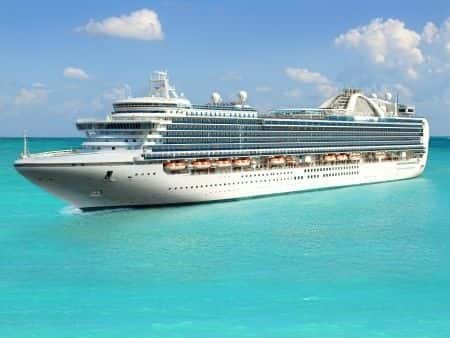Cruise Ship Employee Suffers Work-Related Injury Due to Unsafe Conditions
Updated on
This case involves a man who was employed as a chef in the galley of a large cruise ship. In the course of his employment, the man needed to reach for canned foods that were located on a high shelf in the pantry. The man was fairly short, and was unable to reach up to the shelf in question. Nevertheless, he was not given a stool or ladder to help him reach the shelf. This forced the man to jump in order to reach the cans. On one occasion, the man jumped to reach for one of the cans and landed awkwardly, causing a serious fracture in his ankle.
Question(s) For Expert Witness
1. Please describe your experience in cruise ship employee safety.
2. What are the safety standards that should be in place to prevent incidents like this from happening?
3. Are you familiar with the Jones Act?
Expert Witness Response E-008055
 My Cruise Ship Safety experience includes service as Safety Manager aboard Norwegian Cruise Lines (NCLA) vessels operating between the Hawaiian Islands, as well as over 20 years of related Maritime Safety expertise. I am very familiar with the Jones Act and have written published articles about it. Based upon your exploration of "Jones Act" applicability, I would explore proper Safety Familiarization for the injured person as well as for all his associates, and proper Supervisory training for any supervisory staff involved. I would also explore proper compliance with International Safety Management with respect to training for repetitive and "job specific" tasks. I would explore the compliance under ISM for reporting of incidents, near misses and any related non-conformities. I would need to review training records and time in service for not only the victim, but also supervisory staff and associates, as well as the required Policies and Procedures mandated under ISM for all the duties for wait staff and their supervisors. I would also want to review existing conditions, including but not limited to, weather, maintenance of operational and safety equipment, safeguards in place, and the Incident reports for staff response and medical attention (if any) provided post-incident. The Safety Standards that should have been in place would be all USCG regulations under 46 CFR and 33 CFR, Safety of Life at Sea (SOLAS).
My Cruise Ship Safety experience includes service as Safety Manager aboard Norwegian Cruise Lines (NCLA) vessels operating between the Hawaiian Islands, as well as over 20 years of related Maritime Safety expertise. I am very familiar with the Jones Act and have written published articles about it. Based upon your exploration of "Jones Act" applicability, I would explore proper Safety Familiarization for the injured person as well as for all his associates, and proper Supervisory training for any supervisory staff involved. I would also explore proper compliance with International Safety Management with respect to training for repetitive and "job specific" tasks. I would explore the compliance under ISM for reporting of incidents, near misses and any related non-conformities. I would need to review training records and time in service for not only the victim, but also supervisory staff and associates, as well as the required Policies and Procedures mandated under ISM for all the duties for wait staff and their supervisors. I would also want to review existing conditions, including but not limited to, weather, maintenance of operational and safety equipment, safeguards in place, and the Incident reports for staff response and medical attention (if any) provided post-incident. The Safety Standards that should have been in place would be all USCG regulations under 46 CFR and 33 CFR, Safety of Life at Sea (SOLAS).
About the author
Joseph O'Neill
Joe has extensive experience in online journalism and technical writing across a range of legal topics, including personal injury, meidcal malpractice, mass torts, consumer litigation, commercial litigation, and more. Joe spent close to six years working at Expert Institute, finishing up his role here as Director of Marketing. He has considerable knowledge across an array of legal topics pertaining to expert witnesses. Currently, Joe servces as Owner and Demand Generation Consultant at LightSail Consulting.
Subscribe to our newsletter
Join our newsletter to stay up to date on legal news, insights and product updates from Expert Institute.
Sign up nowFind an expert witness near you
What State is your case in?
Subscribe to our newsletter
Join our newsletter to stay up to date on legal news, insights and product updates from Expert Institute.



